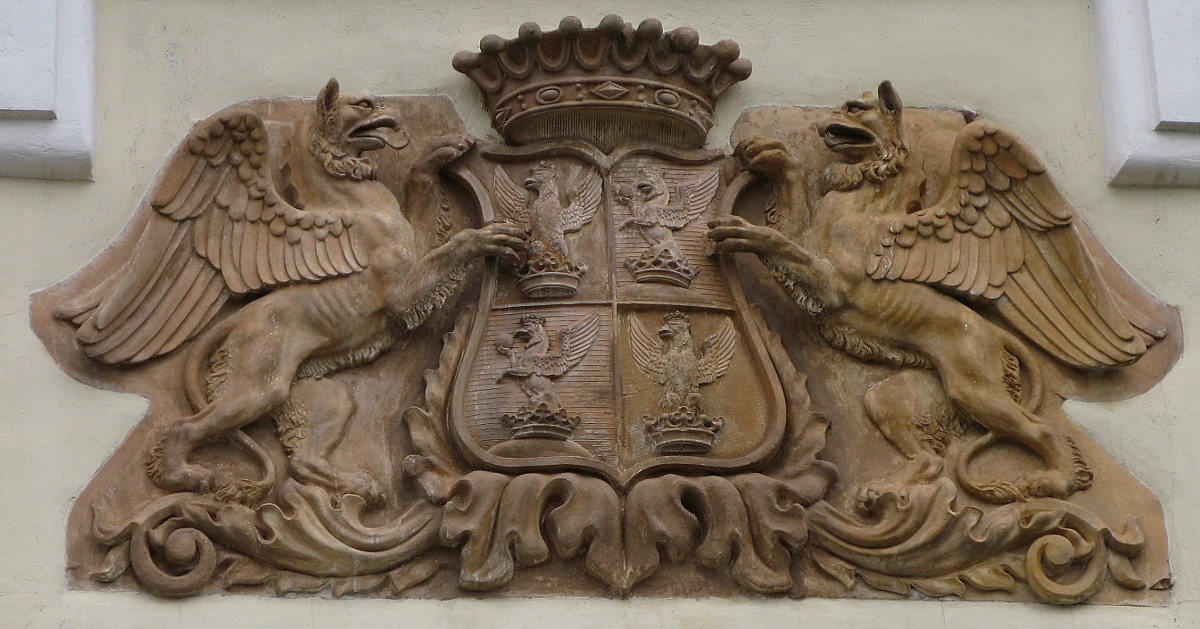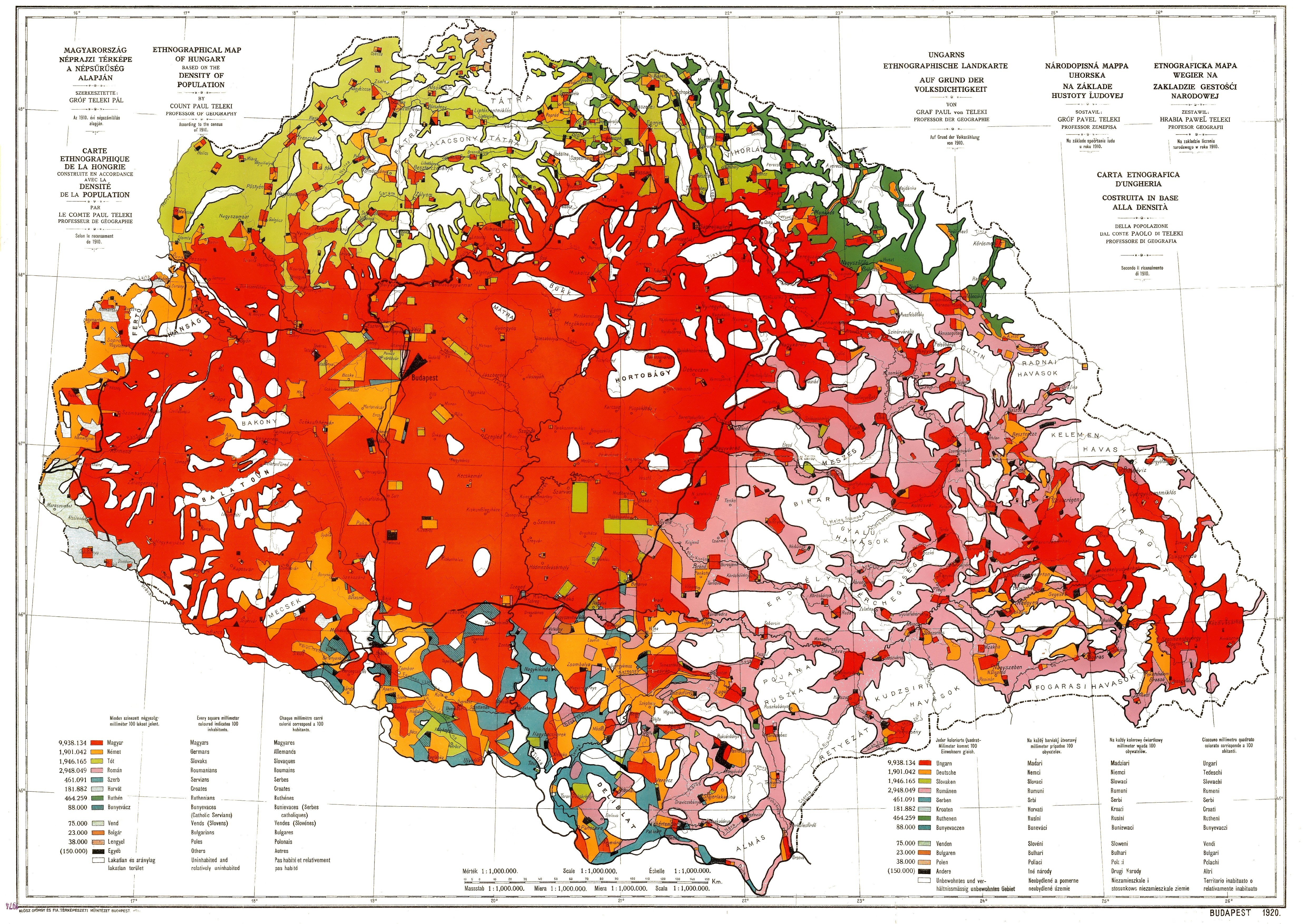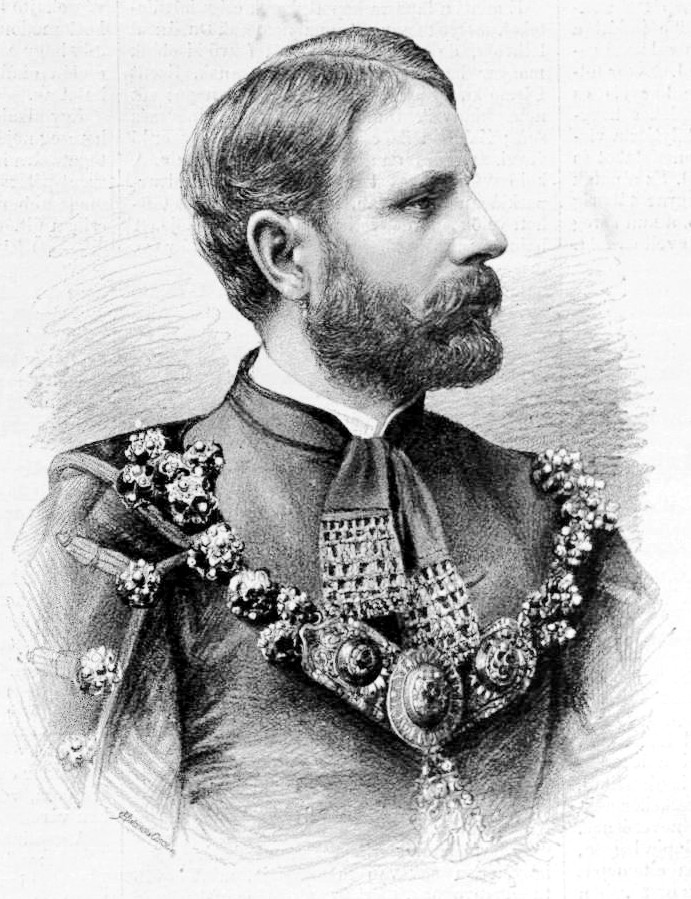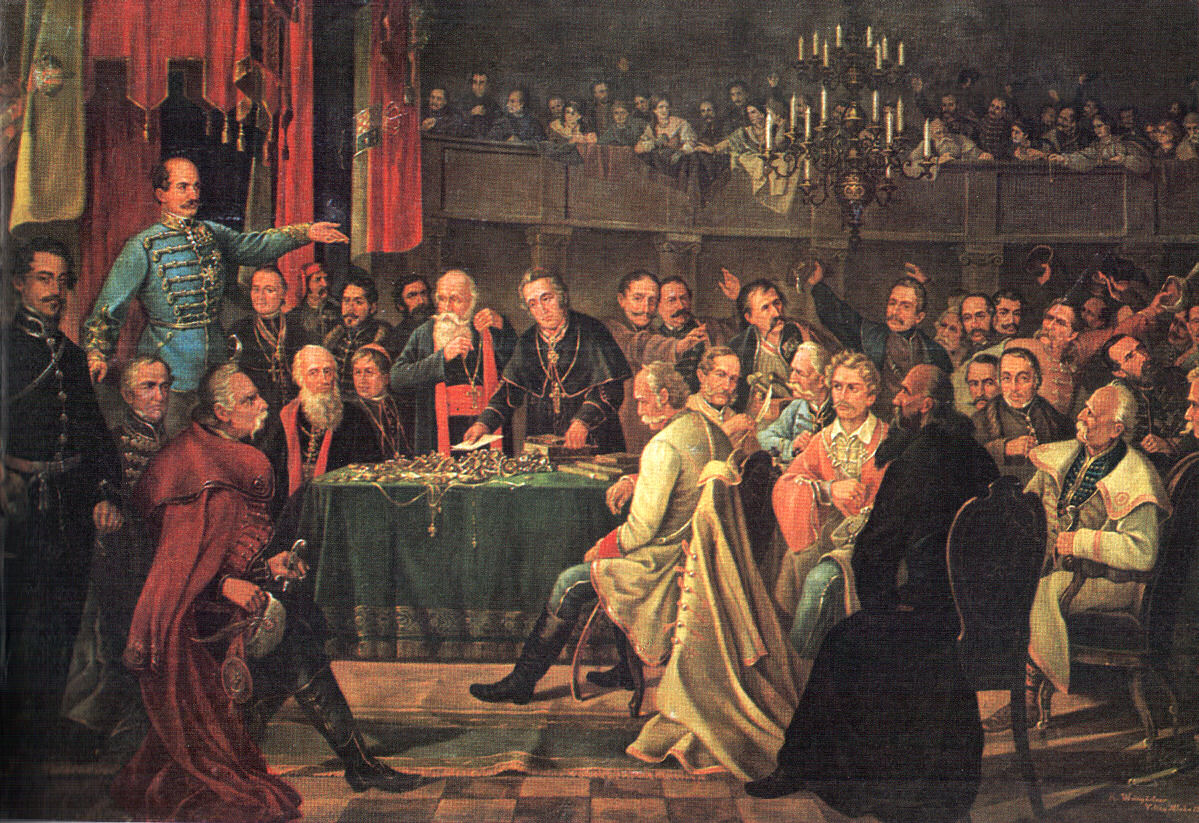|
Ladislav Pejačević
Count Ladislav Pejačević of Virovitica ( en, Ladislaus Peyachevich of Virovitica, hr, Ladislav Pejačević Virovitički, hu, Pejácsevics László; Sopron, Kingdom of Hungary 5 April 1824 – Našice, 7 April 1901) was a Croatian aristocrat and statesman, a member of the Pejačević noble family, remarkable and influential in the Kingdom of Croatia-Slavonia within the Austro-Hungarian Empire. He was the Ban (viceroy) of Croatia between 1880 and 1883. Biography Ladislav Pejačević was the eldest son of Ferdinand Karlo Rajner /''Ferdinand Charles Rainer''/ (1800–1878) whose mother was Hungarian Countess Mária Eleonóra née Erdődy /monyorókeréki and monoszlói branch/ (1769—1840). His wife was Marija /''Mary''/ née Döry de Jobaháza. His grandfather Karlo III Ferdinand was the founder of Našice branch of the family. On November 25, 1852, he married the baroness Gabrijela /'' Gabrielle''/ Döry de Jobaháza and they had three children: Marija, Teodor /''Theod ... [...More Info...] [...Related Items...] OR: [Wikipedia] [Google] [Baidu] |
Virovitica
Virovitica () is a Croatian city near the Hungarian border. It is situated near the Drava river and belongs to the historic region of Slavonia. Virovitica has a population of 14,688, with 21,291 people in the municipality (census 2011). It is also the capital of Virovitica-Podravina County. Name Virovitica has also historically been known by the names ''Wirowititz''/''Virovititz'' and ''Wirowitiza'' (German), ''Viroviticza'', ''Verewitiza'', ''Verowitiza'', ''Verowtiza'', ''Verőce'' ( Hungarian) and ''Varaviza'' (Italian), ''Viroviticza'' or ''Verucia'' (Latin). History The town is first mentioned in 1234. It was part of Ottoman Empire between 1552 and 1684 and was kaza centre initially in Sanjak of Pojega (1552–1601), later in Sanjak of Rahoviçe in Kanije Eyalet (1601–1684) until the Habsburg conquest in 1684. In the late 19th century and early 20th century, Virovitica was a district capital in the Virovitica County of the Kingdom of Croatia-Slavonia. Demographics The ... [...More Info...] [...Related Items...] OR: [Wikipedia] [Google] [Baidu] |
Rainer (surname)
Rainer is a German surname. Notable people People with the Rainer family name include: *Adam Rainer (1899–1950), Austrian dwarf and giant *Alfred Rainer (1987–2008), Austrian Nordic combined skier * Alois Rainer (born 1965), German politician *Arnulf Rainer (born 1929), Austrian painter * Dachine Rainer (1921–2000), British poet and anarchist *Francisc Rainer (1874–1944), Austrian-born Romanian physician *Friedrich Rainer (1903–1947), Austrian National Socialist politician * Gerhard Rainer, Austrian bobsledder *Luise Rainer (1910–2014), German film actress *Margrit Rainer (1914–1982), Swiss actress *Marie-Luise Rainer, Italian luger *Niklas Rainer, Swedish alpine skier * Ove Rainer (1925–1987), Swedish politician *Peter Rainer, German violinist *Reinhold Rainer (born 1973), Italian luger * Roland Rainer (1910–2004), Austrian architect * Thom S. Rainer (born 1955), American Christian writer and speaker *Wali Rainer (born 1977), American footb ... [...More Info...] [...Related Items...] OR: [Wikipedia] [Google] [Baidu] |
Croatian Nobility
Croatian nobility ( hr, plemstvo, lit=vlastelin; french: la noblesse) was a privileged social class in Croatia during the Antiquity and Medieval periods of the country's history. Noble families in the Kingdom of Croatia included high ranking populates from Slavonia, Dalmatia, Istria, and Republic of Ragusa. Members belonged to an elite social hierarchy, normally placed immediately behind blood royalty, that possessed considerably more privileges or eminence than most other classes in a society. Membership thereof typically was often hereditary. Historically, membership in the nobility and the prerogatives thereof have been regulated or acknowledged by the monarch. Acquisition of sufficient power, wealth, military prowess or royal favour enabled commoners to ascend into the nobility. The country's royalty was heavily influenced by France's nobility resulting members of the Royal Courts to assume French titles and practices during French occupation. The controversial assumption ... [...More Info...] [...Related Items...] OR: [Wikipedia] [Google] [Baidu] |
Magyarization
Magyarization ( , also ''Hungarization'', ''Hungarianization''; hu, magyarosítás), after "Magyar"—the Hungarian autonym—was an assimilation or acculturation process by which non-Hungarian nationals living in Austro-Hungarian Transleithania adopted the Hungarian national identity and language in the period between the Compromise of 1867 and Austria-Hungary's dissolution in 1918. Magyarization occurred both voluntarily and as a result of social pressure, and was mandated in certain respects by specific government policies. Before the World War I, only three European countries declared ethnic minority rights, and enacted minority-protecting laws: the first was Hungary (1849 and 1868), the second was Austria (1867), and the third was Belgium (1898). In contrast, the legal systems of other pre-WW1 era European countries did not allow the use of European minority languages in primary schools, in cultural institutions, in offices of public administration and at the legal courts ... [...More Info...] [...Related Items...] OR: [Wikipedia] [Google] [Baidu] |
Károly Khuen-Héderváry
Count Károly Khuen-Héderváry de Hédervár, born as ''Károly Khuen de Belás'' ( hr, Dragutin Khuen-Héderváry, 23 May 1849 – 16 February 1918) was a Hungarian politician and the Ban of the Kingdom of Croatia-Slavonia in the late nineteenth century. Khuen's reign was marked by a strong magyarization. After a series of riots broke out against him in 1903, Khuen was relieved of his duty and appointed prime minister of Hungary. Background Born in Bad Gräfenberg, Austrian Silesia, Károly Khuen de Belás was the oldest son of seven siblings born to Hungarian magnate Antal Khuen de Belás (1817–1886) and his wife, Baroness Angelika Izdenczi de Monostor et Komlós (1823–1894). * Alice (1850–1879), wife of Count Zsigmond Zichy de Zich et Vásonykeö, an Imperial and Royal Chamberlain, Lieutenant, they married 8 January 1877 * Antal (1852–1890), Imperial and Royal Chamberlain, member of the Sabor, prominent architect * Angelika (1855–1918), wife of Count Albert v ... [...More Info...] [...Related Items...] OR: [Wikipedia] [Google] [Baidu] |
Kingdom Of Croatia (Habsburg)
The Kingdom of Croatia ( hr, Kraljevina Hrvatska; la, Regnum Croatiae; hu, Horvát Királyság, german: Königreich Kroatien) was part of the lands of the Habsburg monarchy from 1527, following the Election in Cetin, and the Austrian Empire from 1804 to 1867. It was also a part of the Lands of the Hungarian Crown, but was subject to direct Imperial Austrian rule for significant periods of time, including its final years. Its capital was Zagreb. The Kingdom of Croatia had large territorial losses in wars with the Ottoman Empire in the 16th century. Until the 18th century, the kingdom included only a small north-western part of present-day Croatia around Zagreb, and a small strip of coastland around Rijeka, that were not part of the Ottoman Empire or part of the Military Frontier. Between 1744 and 1868, the Kingdom of Croatia included a subordinate autonomous kingdom, the Kingdom of Slavonia. The territory of the Slavonian kingdom was recovered from the Ottoman Empire, and was s ... [...More Info...] [...Related Items...] OR: [Wikipedia] [Google] [Baidu] |
Vienna
en, Viennese , iso_code = AT-9 , registration_plate = W , postal_code_type = Postal code , postal_code = , timezone = CET , utc_offset = +1 , timezone_DST = CEST , utc_offset_DST = +2 , blank_name = Vehicle registration , blank_info = W , blank1_name = GDP , blank1_info = € 96.5 billion (2020) , blank2_name = GDP per capita , blank2_info = € 50,400 (2020) , blank_name_sec1 = HDI (2019) , blank_info_sec1 = 0.947 · 1st of 9 , blank3_name = Seats in the Federal Council , blank3_info = , blank_name_sec2 = GeoTLD , blank_info_sec2 = .wien , website = , footnotes = , image_blank_emblem = Wien logo.svg , blank_emblem_size = Vienna ( ; german: Wien ; ba ... [...More Info...] [...Related Items...] OR: [Wikipedia] [Google] [Baidu] |
Slavonian Krajina
The Slavonian Military Frontier ( hr, Slavonska vojna krajina or ; german: Slawonische Militärgrenze; sr, Славонска војна крајина; hu, Szlavón határőrvidék) was a district of the Military Frontier, a territory in the Habsburg monarchy, first during the period of the Austrian Empire and then during the Austro-Hungarian Monarchy. It was formed out of territories the Habsburgs conquered from the Ottoman Empire and included southern parts of Slavonia and Syrmia; today the area it covered is mostly in eastern Croatia, with its easternmost parts in northern Serbia (mostly in Vojvodina region). Divisions The Slavonian Military Frontier was divided between three regiments: Regiment N°VII, based at Vinkovci; Regiment N°VIII, based at Nova Gradiška and Regiment N°IX, based at Petrovaradin. Other important towns in the area included Sremski Karlovci, Stara Pazova, Zemun, and Sremska Mitrovica. History During the history, name Slavonian Military Frontier ... [...More Info...] [...Related Items...] OR: [Wikipedia] [Google] [Baidu] |
Croatian Krajina
The Croatian Military Frontier ( hr, Vojna krajina or ') was a district of the Military Frontier, a territory in the Habsburg monarchy, first during the period of the Austrian Empire and then during Austria-Hungary. History Founded in the late 16th century out of lands of the Habsburg Kingdom of Croatia, it was initially a nominal part of that Kingdom, to be transferred in 1627 to direct imperial rule as part of the Military Frontier. The Frontier was located on the border with the Ottoman Empire. In the Frontier zone, the king-emperors promised free land and freedom of religion to people who came to the area with the majority of the population being Croats, Serbs and Vlachs. In exchange, the people who lived in the area had an obligation to militarily fight for the Empire, and to protect the land. In 1630 Emperor Ferdinand II enacted the ''Statuta Valachorum'' laws. It was known that the soldiers had to fulfill military service from the age of 16 until 66. In the end of the 17th c ... [...More Info...] [...Related Items...] OR: [Wikipedia] [Google] [Baidu] |
Sabor
The Croatian Parliament ( hr, Hrvatski sabor) or the Sabor is the unicameral legislature of the Republic of Croatia. Under the terms of the Croatian Constitution, the Sabor represents the people and is vested with legislative power. The Sabor is composed of 151 members elected to a four-year term on the basis of direct, universal and equal suffrage by secret ballot. Seats are allocated according to the Croatian Parliament electoral districts: 140 members of the parliament are elected in multi-seat constituencies. An additional three seats are reserved for the diaspora and Croats in Bosnia and Herzegovina, while national minorities have eight places reserved in parliament. The Sabor is presided over by a Speaker, who is assisted by at least one deputy speaker (usually four or five deputies). The Sabor's powers are defined by the Constitution and they include: defining economic, legal and political relations in Croatia, preservation and use of its heritage and entering into alli ... [...More Info...] [...Related Items...] OR: [Wikipedia] [Google] [Baidu] |





